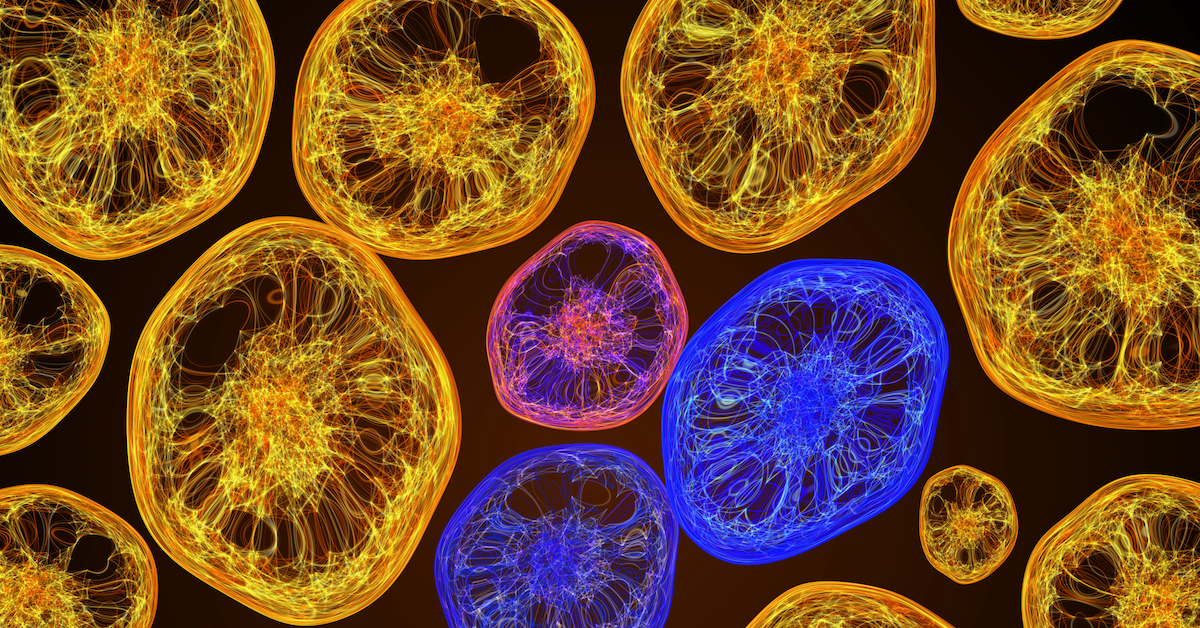For decades scientists have argued that the protein amyloid beta triggers the process that leads to Alzheimer’s.
Others question this and suggest other underlying causes. These include abnormal tau protein metabolism, infections, neurotoxic chemicals, and more.
Now, a new potential cause has been added to the list. And if researchers are right, there could be a new treatment on the horizon, too.
For over 30 years, drugs that target amyloid beta proteins have failed to stop the progression of Alzheimer’s, even though they’re clearly involved in the disease process. This led some scientists to believe that a buildup of amyloid comes only as a response to the disease and there’s a need to look elsewhere to find its underlying cause.
The latest news on this research front comes from scientists at NYU Grossman School of Medicine. They’ve discovered that amyloid plaques only form because of the failure of brain cells to clear their waste, a condition known as lysosome dysfunction.
Cells Bulge With “Poison”
For their study researchers examined five different models of mice engineered to develop Alzheimer’s. They discovered that the initial damage to brain cells takes place well before the formation of amyloid plaques. The root dysfunction, they observed, occurred in brain cells’ lysosomes.
These are small sacs inside every cell that are filled with acidic enzymes. Their function is to break down, remove and recycle metabolic waste products, worn out cell parts and cells damaged beyond repair.
A specially developed form of imaging was used to track cellular waste removal, also known as autophagy. This showed that as brain cells in the mice started to degenerate from the disease, acid levels inside the lysosomes decreased.
Some of the lysosomes became enlarged as they fused with so-called autophagic vacuoles filled with waste that had failed to be broken down. These autophagic vacuoles also contained early forms of amyloid beta.
In neurons most heavily damaged and destined for early death as a result, the vacuoles pooled together to form “rosettes [that] resemble petals of a flower.” The researchers called this unique pattern PANTHOS (poisonous anthos (flower)). These bulged out from cells’ outer membranes and massed around each cell’s nucleus.
Accumulations of amyloid beta formed filaments inside the cell, another hallmark of Alzheimer’s disease. Indeed, researchers observed almost-fully formed plaques inside some damaged neurons.
Why Amyloid-Targeted Drugs Don’t Work
Lead investigator Ju-Hyun Lee explained, saying, “Previously, the working hypothesis mostly attributed the damage observed in Alzheimer’s disease to what came after amyloid buildup outside of brain cells, not before and from within neurons.”
His colleague Ralph Dixon continued, saying, “This new evidence changes our fundamental understanding of how Alzheimer’s disease progresses; it also explains why so many experimental therapies designed to remove amyloid plaques have failed to stop disease progression because the brain cells are already crippled before the plaques fully form outside the cell.
“Our research suggests that future treatments should focus on reversing the lysosomal dysfunction and rebalancing acid levels inside the brain’s neurons.”
Is Treatment for Lysosomal Dysfunction Available?
The research team is already working on ways to treat lysosomal problems.
They’ve found a gene known to cause Alzheimer’s is also involved with a failure to dispose of waste. In mice they showed that neuronal damage caused by the gene could be reversed by restoring normal acid levels in the lysosomes.
While nothing is yet available through your doctor, I’ll keep you posted as the research continues.







